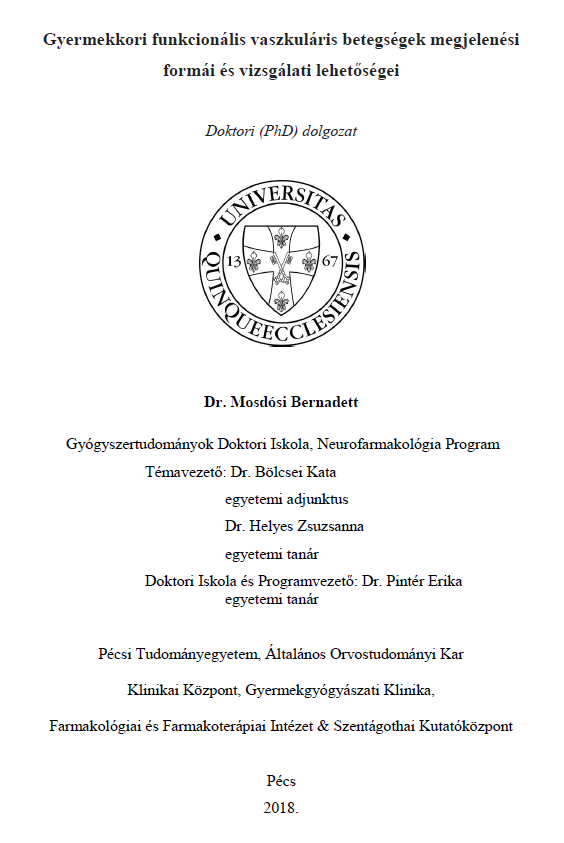Gyermekkori funkcionális vaszkuláris betegségek megjelenési formái és vizsgálati lehetőségei
Abstract
Raynaud’s phenomenon, acrocyanosis and erythromelalgia are functional vascular diseases that differ with respect to clinical signs, prevalence, pathogenesis, therapy and prognosis. The most common form is Raynaud phenomenon. Raynaud phenomenon is a transient vasospasm of peripheral arteries and arterioles that classically results in triphasic discoloration of the affected region. The symmetrical triphasic colour pattern is not typical in children. The fingers are the most commonly affected region. It may be associated with sensation of numbness and insensitivity (80%), pain (50%) and prolonged wound healing. The phenomenon is typically triggered by cold exposure or stress. In the primary form the age at onset is the adolescent period, the secondary form can manifest later. It is 3-4 times more common in women. It is classified into primary and secondary RP. Primary Raynaud is more common in which patients are seronegative for immunserological test and have normal nailfold capillaroscopy. Secondary RP refers to the presence of the disorder in association with a related illness, mostly connective tissue disorders. Although, the prognosis of Raynaud phenomenon is good, 5-20 % of patients might develop connective tissue disease. The pathophysiology of Raynaud phenomenon is not completely understood. The mechanism behind the vasospasm might include both central and peripheral neuronal mechanisms, endothelial damage, abnormal immune reactivity and intravascular causes. In primary Raynaud phenomenon only a functional abnormality can be detected, in secondary Raynaud phenomenon structural changes are involved. The diagnosis is based on medical history, physical examination, laboratory tests and nailfold capillaroscopy.

